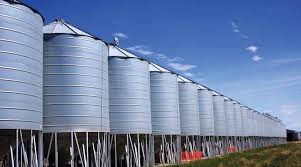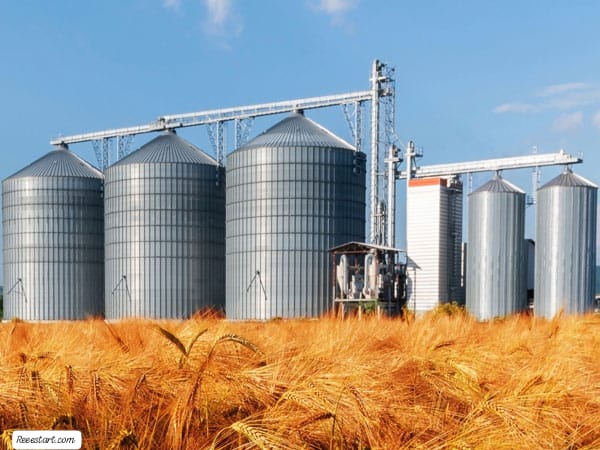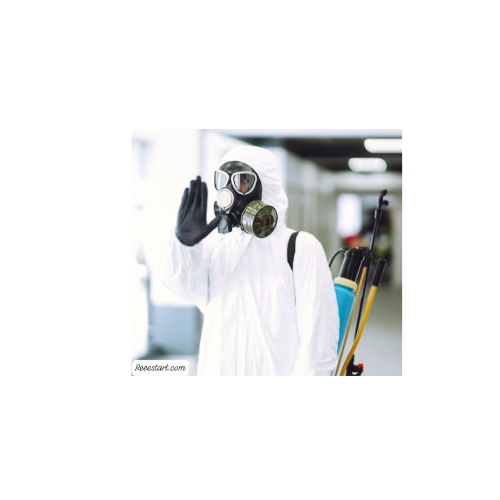Fumigation is a crucial method for pest control, particularly in grain storage facilities, where pests such as insects and molds can cause significant damage to stored products. One of the key steps in the fumigation process is determining the correct dosage of fumigant needed for effective pest control. This dosage calculation is influenced by the volume of the storage space, the mass of the stored goods, and the density of the products. This article will explain in detail how to calculate fumigation dosage based on both volume and mass, and how the density of various grain types affects fumigation requirements.
Fumigation Dosage Based on Volume
The most common method for calculating fumigation dosage is based on the volume of the storage space. The volume of the area provides a general idea of how much space the fumigant must fill to effectively control pests. This method is most useful when the space is large, and the products are loosely packed.
Formula for Volume-Based Fumigation Dosage:
- Required Fumigant Dosage (kg) = Volume (m³) × Dosage Rate (kg/m³)
Example 1: Fumigating a Warehouse for Grain Storage
- Assume a grain warehouse has the following dimensions:
- Length = 30 meters
- Width = 15 meters
- Height = 6 meters
- Step 1: Calculate the volume of the warehouse.
- Volume = Length × Width × Height
Volume = 30 m × 15 m × 6 m = 2,700 m³
- Volume = Length × Width × Height
- Step 2: Apply the recommended fumigant dosage rate. Assume the recommended rate is 0.015 kg per cubic meter (kg/m³).
- Required Fumigant Dosage = 2,700 m³ × 0.015 kg/m³ = 40.5 kg
- Therefore, 40.5 kg of fumigant is required to fumigate the entire warehouse.
Fumigation Dosage Based on Mass (Weight)
In some cases, especially when products are tightly packed and absorb fumigants differently than loosely stored goods, it may be more appropriate to calculate the fumigation dosage based on the mass (weight) of the goods stored. This approach is particularly useful when dealing with high-density products such as bulk grains.
- Formula for Mass-Based Fumigation Dosage:
- Required Fumigant Dosage (kg) = (Mass of Goods (kg) / 1,000) × Dosage Rate (kg)

Example 2: Fumigating Bulk Grains (High Density)
Consider a large silo used for storing bulk wheat, with a volume of 2,700 m³, and the density of wheat is known to be 750 kg/m³.
- Step 1: Calculate the mass of wheat in the silo.
- Mass of Wheat = Density × Volume
Mass of Wheat = 750 kg/m³ × 2,700 m³ = 2,025,000 kg
- Mass of Wheat = Density × Volume
- Step 2: Apply the fumigant dosage rate based on mass. Assume the fumigation procedure recommends 0.02 kg of fumigant per 1,000 kg of wheat.
- Required Fumigant Dosage = (2,025,000 kg / 1,000) × 0.02 kg = 40.5 kg
- Thus, even though we are using the mass of the wheat, the required fumigant dosage is still 40.5 kg.
The Role of Density in Fumigation Dosage Calculation
Density plays a crucial role in determining the fumigation dosage. Denser products tend to absorb fumigants differently than less dense products. Products with higher densities are typically more tightly packed, reducing the amount of air space and altering how the fumigant interacts with the material.
Formula for Mass Calculation Using Density:
- Mass (kg) = Density (kg/m³) × Volume (m³)
Example 3: Fumigating Different Products with Different Densities
Let’s compare the fumigation of barley and rice stored in two different storage spaces, each with a volume of 500 m³. Barley has a lower density than rice, meaning there is more air space between the grains, while rice is denser and more tightly packed.
- Density of Barley: 600 kg/m³
- Density of Rice: 850 kg/m³
- Step 1: Calculate the mass of each product.
- For barley:
Mass of Barley = 600 kg/m³ × 500 m³ = 300,000 kg - For rice:
Mass of Rice = 850 kg/m³ × 500 m³ = 425,000 kg
- For barley:
- Step 2: Apply the fumigation dosage based on mass. Let’s assume the recommended fumigation dosage for barley is 0.015 kg per 1,000 kg, and for rice, it is 0.02 kg per 1,000 kg (due to the higher density of rice).
- For barley:
Required Fumigant for Barley = (300,000 kg / 1,000) × 0.015 kg = 4.5 kg - For rice:
Required Fumigant for Rice = (425,000 kg / 1,000) × 0.02 kg = 8.5 kg
- For barley:
Volume-Based Fumigation is useful when the focus is on the space itself, but this method may be less accurate if the products inside are packed differently.
Mass-Based Fumigation is more accurate when dealing with denser, tightly packed products, as it accounts for the actual amount of material present in the storage space.
Since the density of a product influences how much fumigant is needed, denser products, such as rice, generally require a higher fumigant dosage than less dense products like barley, even if both are stored in the same volume.
By considering both the volume of the space and the mass (or density) of the stored goods, you can ensure that the correct dosage of fumigant is applied for effective pest control.
Common Grain Densities
- Wheat: 750 kg/m³
- Barley: 600 kg/m³
- Rice: 850 kg/m³
- Corn (Maize): 720 kg/m³
- Oats: 530 kg/m³
These densities are typical for these grains in bulk storage and may vary slightly depending on factors like moisture content and processing methods.
By factoring in these densities, agricultural engineers and fumigation specialists can more accurately calculate fumigation requirements, ensuring effective pest control while minimizing waste of fumigants.
Important Notes While Calculating Phosphine Gas Dosage for Fumigation
- Temperature of the Grain:
- The grain temperature significantly affects the efficiency of phosphine fumigation. Higher temperatures typically increase the rate of gas release and diffusion, enhancing effectiveness. Ensure accurate temperature measurements and adjust dosage for lower temperatures if needed to ensure sufficient pest control.
- Tightness of the Bin and Half-Life Loss Time:
- Proper sealing of the fumigation bin is critical. A tightly sealed bin retains phosphine gas longer, improving efficacy. Leaky bins or inadequate sealing will cause gas loss, potentially necessitating higher dosages or longer exposure times. The half-life loss time depends on the bin’s airtightness, so assess and account for this when determining the dosage.
- Weather Conditions and Anticipated Wind:
- Weather conditions, including wind and humidity, can impact gas concentration. Wind may disperse the gas, reducing its effectiveness, so adjust the dosage or select calm weather for fumigation. High humidity may enhance phosphine release, requiring careful monitoring of local weather forecasts.
- Targeted Insects:
- The dosage must be tailored to the insect species being targeted, as different pests may require varying doses depending on their resistance levels and life stages. Review pest-specific data and resistance history to determine an effective dosage.
- Review of Historical Monitoring Data and Latest Label Instructions:
- Always consult the latest monitoring data and the most up-to-date product label. Monitoring data provides insights into pest infestations and any emerging resistance patterns. Following the label instructions ensures you are using the product as recommended by the manufacturer and in compliance with safety standards.
Sub-lethal Dosages and Resistance:
- Avoid sub-lethal dosages, as they may fail to control pests and promote phosphine resistance over time. Monitor pest resistance patterns and adjust dosages or methods if resistance is detected, to maintain the effectiveness of fumigation treatments.




